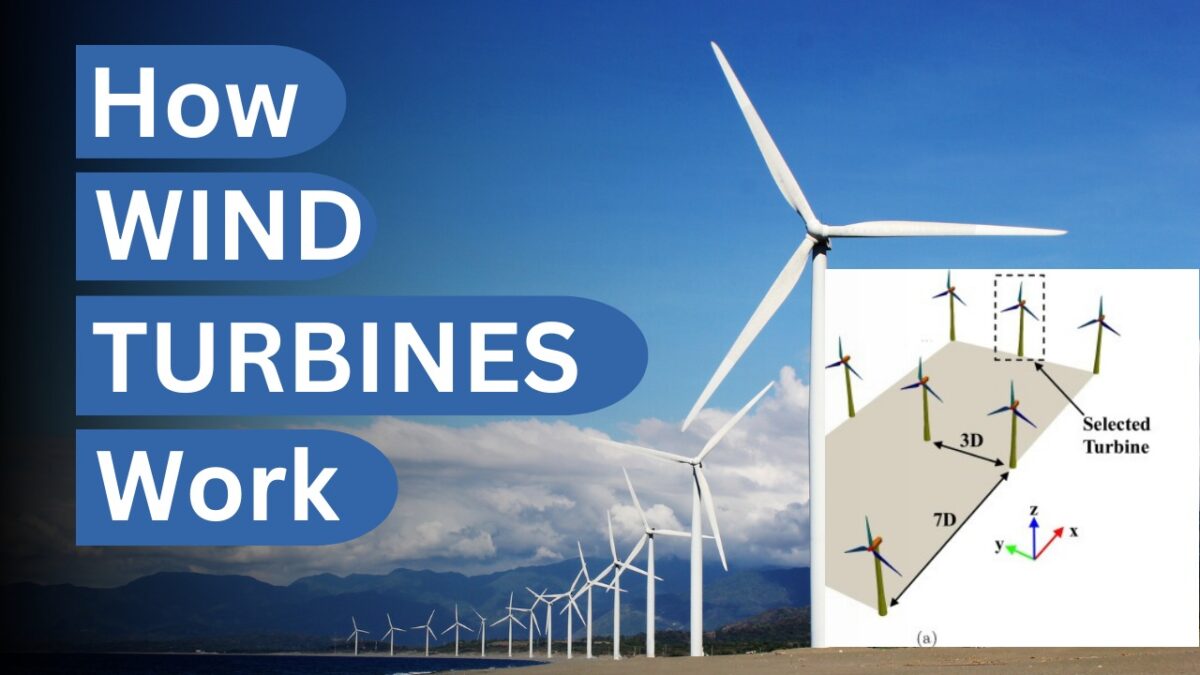A wind turbine is a sophisticated device designed to convert kinetic energy from the wind into electrical energy. Providing a sustainable and renewable power source. The basic structure of a wind turbine includes large, aerodynamic blades mounted on a rotor. When the wind blows, these blades catch the wind’s energy and spin the rotor. This rotational motion is transferred to a low-speed shaft connected to a gearbox the gearbox increases the rotational speed, transferring it to a high-speed shaft that drives the generator.
How Its Work
The generator is a critical component, where the mechanical energy component, where the mechanical energy is transformed into electrical energy through electromagnetic induction inside the generator the rotation causes magnets to move past coils of wire, creating a flow of electrical current. This generated electricity is then transmitted down the turbine tower through cables to a transformer. The transformer steps up the voltage to make it suitable for long-distance transmission via power lines.
Modern wind turbines are equipped with advanced control systems to maximize efficiency. Sensors monitor wind speed and direction, allowing the turbine to adjust the pitch of the blades and the yaw of the rotor to capture the most wind energy possible. This optimization ensures the turbine operates effectively under varying wind conditions.
Wind turbines are pivotal in the transition to renewable energy, significantly reducing greenhouse gas emissions and reliance on fossil fuels. They are commonly used in wind farms, where multiple turbines work together to generate substantial amounts of electricity. This clean energy demands while minimizing environmental impact, making wind turbines a cornerstone of sustainable energy strategies worldwide.

Its Part And System Work
- Rotor:
In wind turbine optimization, the rotor plays a crucial role in converting wind energy into mechanical energy. The rotor consists of aerodynamically designed blades that capture the wind’s kinetic energy. As the wind blows, it causes the blades to rotate around a hub connected to a low-speed shaft. This rotational motion is transferred through a gearbox to increase speed, driving a high-speed shaft connected to the generator. Efficient rotor design, including blade shape and size, is essential for maximizing energy capture. Advance control systems adjust the rotor’s pitch and yaw to optimize alignment with wind direction, ensuring the turbine operates efficiently under varying wind conditions.
- Yaw System:
In wind turbine optimization, the yaw system is essential for aligning the turbine with the direction of the wind. It consists of sensors that detect wind direction and a yaw drive mechanism controlled by a computerized system. This mechanism rotates the entire turbine nacelle to face into the wind, ensuring that the turbine to operate efficiently under varying wind conditions, enhancing energy production and overall performance. Proper alignment reduces aerodynamic losses and improves the turbine’s ability to harness wind power effectively, contributing to higher energy yields and reduced operational costs.
Conclusion:
Wind turbine optimization is crucial for maximizing energy production efficiency and ensuring sustainable operation. By focusing on key components such as blade design, yaw systems, generator efficiency, and control mechanisms, turbines can be fine-tuned top capture more wind energy effectively. Proper alignment always face into the wind, minimizing aerodynamic losses and enhancing overall performance. Advanced control systems monitor and adjust turbine parameters in real-time, optimizing operation under varying wind conditions. This holistic under varying wind conditions. This holistic approach not only increases energy yields but also reduces operational costs and environmental impact. Wind turbine optimization plays a pivotal role in the global shift towards renewable energy, offering a clean and reliable source of power while contributing to mitigating climate change. Continued research and innovation in turbine technology promise even greater efficiencies and advancements in the years to come, further solidifying wind energy’s position as a cornerstone of sustainable energy solutions worldwide.
Related posts
Subscribe
* You will receive the latest news and updates on your favorite celebrities!

